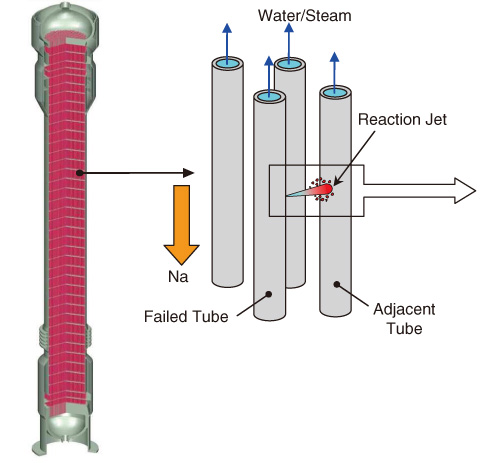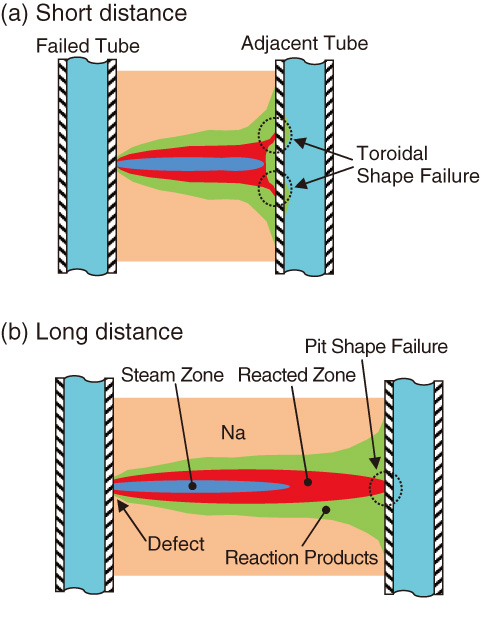
Fig.2-11 Steam generator and Na/water reaction jet

Fig.2-12 Na/water reaction jet and tube failure area
In steam generators in sodium-cooled fast reactors (SFRs), water is turned into steam by heat from sodium (Na) to supply steam to a turbine/generator system. Heat transfer tubes are incorporated in a steam generator; sodium flows outside the tubes and water or steam flows inside the tubes for heat exchange (Fig.2-11).
In the event of heat transfer tube failure, water or steam leaks into the sodium side and reacts with Na to produce a high-temperature reaction jet and an erosion or corrosion attack. If this reaction jet continues to attack adjacent tubes, tube failure is also assumed to occur on adjacent tubes (Fig.2-11, right). To prevent this tube failure escalation, the plant safety system monitors the coolant pressure changes and the concentration of hydrogen, which is produced by Na/water reactions, in the coolant. As soon as a Na/water reaction is detected, the safety system removes water or steam from the heat transfer tubes in a steam generator to terminate the reaction.
To ensure this safety function in steam generators, the reaction jet resistance of the heat transfer tubes needs to be investigated. Because the reaction jet resistance depends on the water leak rate, inter-tube distance, and Na temperature, the heat transfer tubes have to be examined under various conditions to study the influence of these parameters. Na/water reaction tests to obtain the tube resistance data were conducted in Japan (the Japan Atomic Energy Agency, JAEA) and France (Commissariat à l’Énergie Atomique et aux Énergies Alternatives, CEA), but both institutes collaborated for efficient data acquisition.
CEA fabricated heat transfer tube test specimens for this collaboration, and these specimens were loaded into a sodium vessel of JAEA’s Na/water reaction test equipment. This test equipment provided the same environment as in real steam generators (~500 °C, ~18 MPa), and the experiment could be performed under a wide range of conditions appropriate to its purpose. Water or steam was injected toward the tube specimen in the sodium vessel, and a reaction jet was formed here and attacked the tube specimen to penetrate the tube wall. The tube penetration times were measured to define the reaction jet resistance characteristics. The internal structure of the reaction jet was also revealed by the configuration on the failed tube surface after the test and the temperature distribution in the reaction jet. Fig.2-12 illustrates aspects of the reaction jets and tube failure areas at different inter-tube distances.
Japan and France will continue this collaboration to accumulate further data concerning the tube resistance characteristics for a few years. The collaborative study is expected to contribute to enhancing the safety of steam generators in both countries’ SFRs.